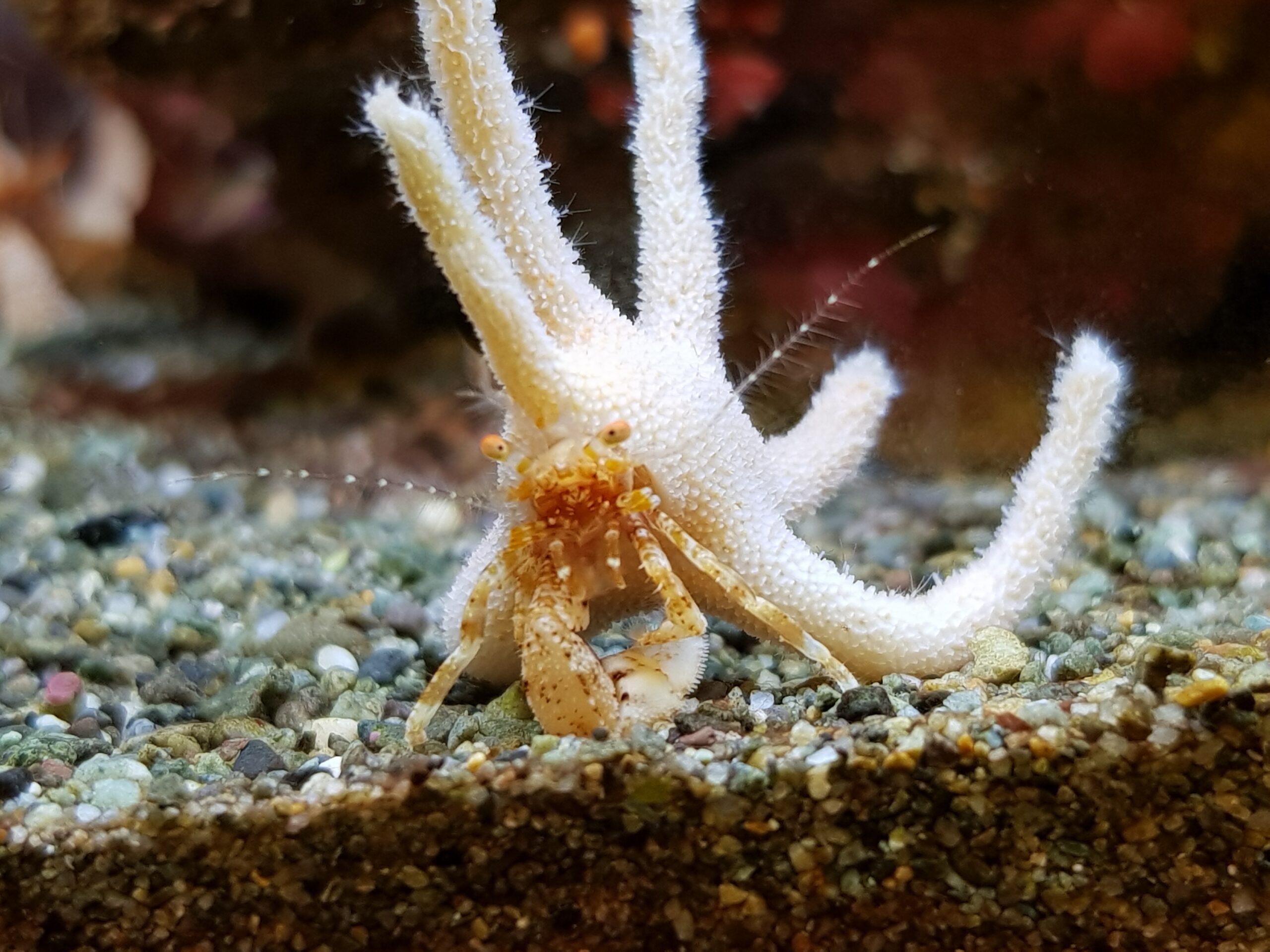Curating an NPS-biotope aquarium in your home opens the unique opportunity to keep filter-feeding and NPS-coral-associated invertebrates that might otherwise do poorly in your typical reef aquarium setup. In today’s article, I highlight three strangely beautiful inverts not commonly kept in home reef tanks but perfectly suited for an aquarium designed for filter feeders, as well as some tips for long-term success with these species.
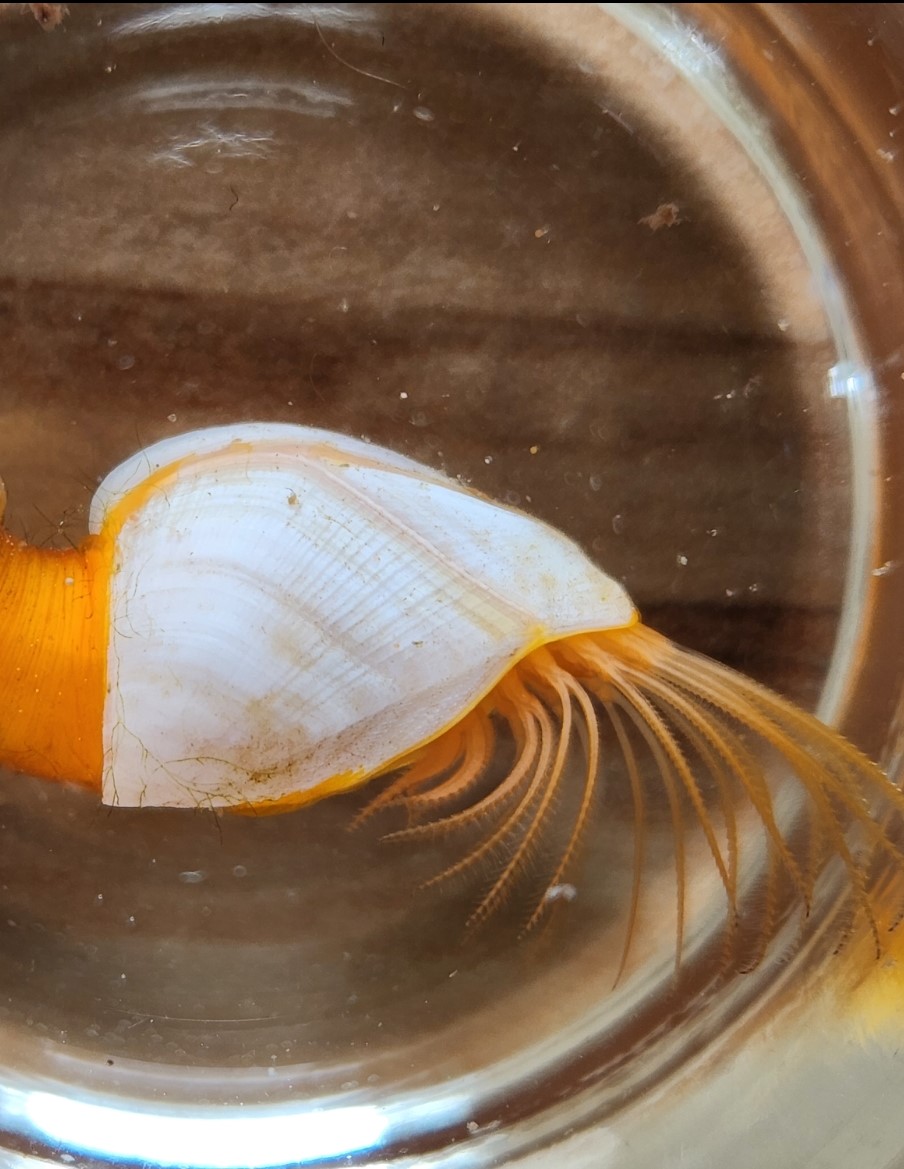
1. Gooseneck Barnacles
Stalked Barnacles are a group of stationary, colonial crustaceans. These filter feeders use strong cement to attach to a hard substrate such as flotsam, larger animals or rocks, and a fleshy peduncle to adjust themselves to receive optimal flow and nutrients.
While sometimes spotted on wholesaler lists as colonies or “clumps”, these alien-looking animals are nearly absent from the aquarium hobby. Of the few genera and species kept in aquariums, Lepas sp. is best suited for tropical tanks, while Dosima sp. or Pollicipes sp. are ideal for temperate systems.
From personal experience, I can refute that these animals are difficult to care for considering a few important aspects. When adding gooseneck barnacles to your reef tank, it is important to add a colony or solitary specimen firmly attached to their substrate, as they cannot reattach once they are removed from their holdfast. As crustaceans, these animals molt frequently as they grow, so strong flow benefits their health.
The most common misconception about goose barnacles is that they should be fed microscopic particles and phytoplankton. In addition to daily feedings of live Artemia nauplii, the colony should be target-fed adult brine shrimp at least twice a week. Care should also be taken regarding potential tankmates as these stationary crustaceans are susceptible to predation from crabs, sea stars, or larger fish.
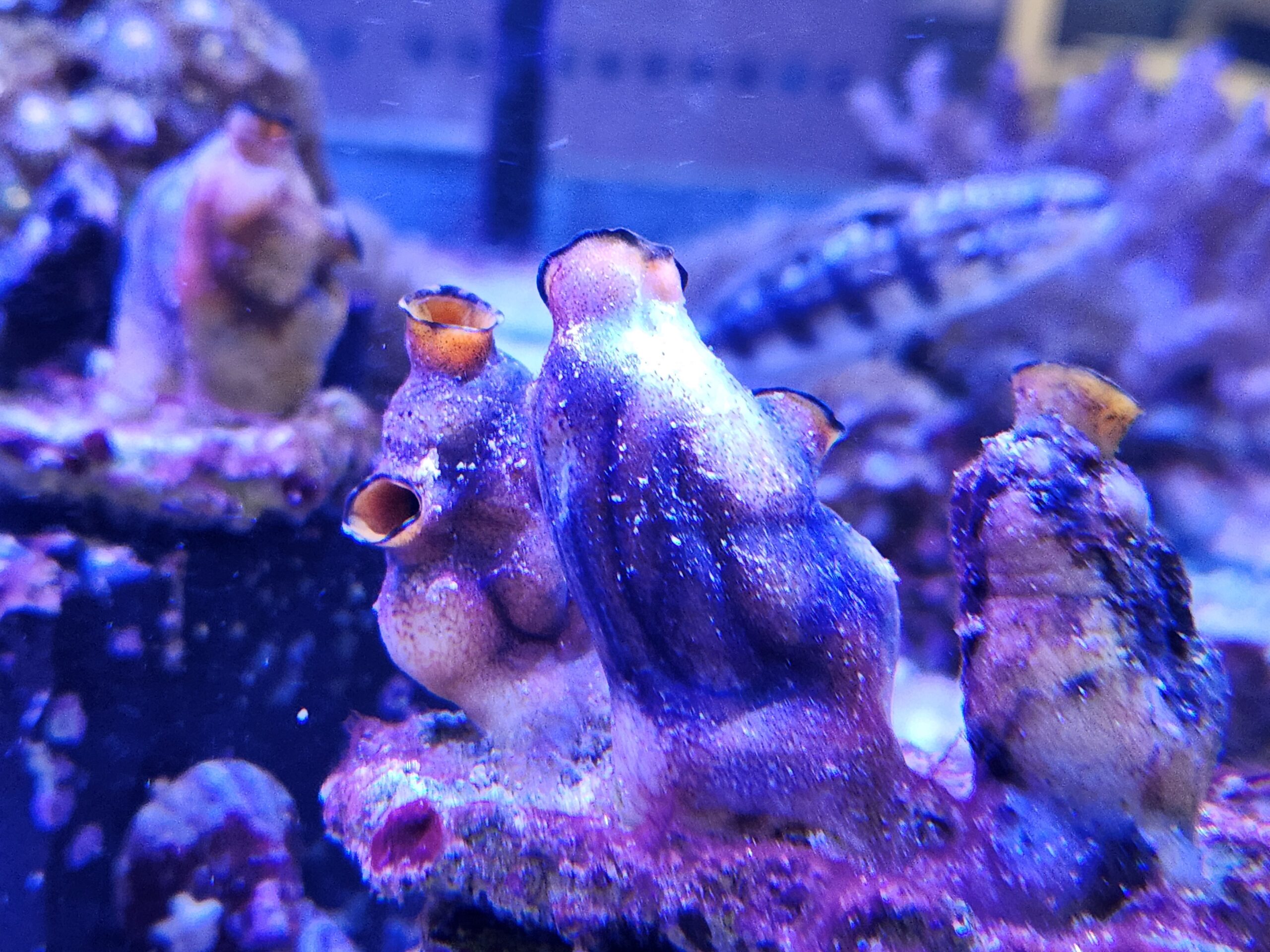
2. Tunicates
A group of animals gaining more popularity in recent years are tunicates. These sea squirts are already much more than just your colorful live-rock hitchhiker. Even though Ascidians are more closely related to vertebrates, they are included in this article. These surprisingly complex animals can be solitary, encrusting-colonial, or stalked colonial, each group being represented in the aquarium trade.
The feeding mechanisms of tunicates are quite complex but simplified they use a fine net of proteins and mucus internally to capture small particles from the water column. The “mesh size” depends on the species of sea squirt making it difficult to give concrete food particle recommendations.
Looking at different mesh sizes, it would be advisable to feed a mix of micronized powdered foods, phytoplankton, and bacterioplankton with a particle size ranging from 0,1-10µm. It is also important to note that mesh size and tunicate size are not proportional, so larger sea squirts might not be able to capture larger food particles.
For any reefer trying tunicates, I recommend Polycarpa aurata, Botrylloides sp., Clavelina robusta, or Clavelina coerulea. Aquarists should avoid the stalked colonial “Blue Lollipop Tunicate” (Nephtheis fascicularis), as only very few reefers have had some success with this species.
When introducing new tunicates to a reef tank, it is common for the ascidians to “melt” in the first few days only to regrow into a complete sea squirt or colony. This phenomenon is more common in colonial than in solitary tunicates.
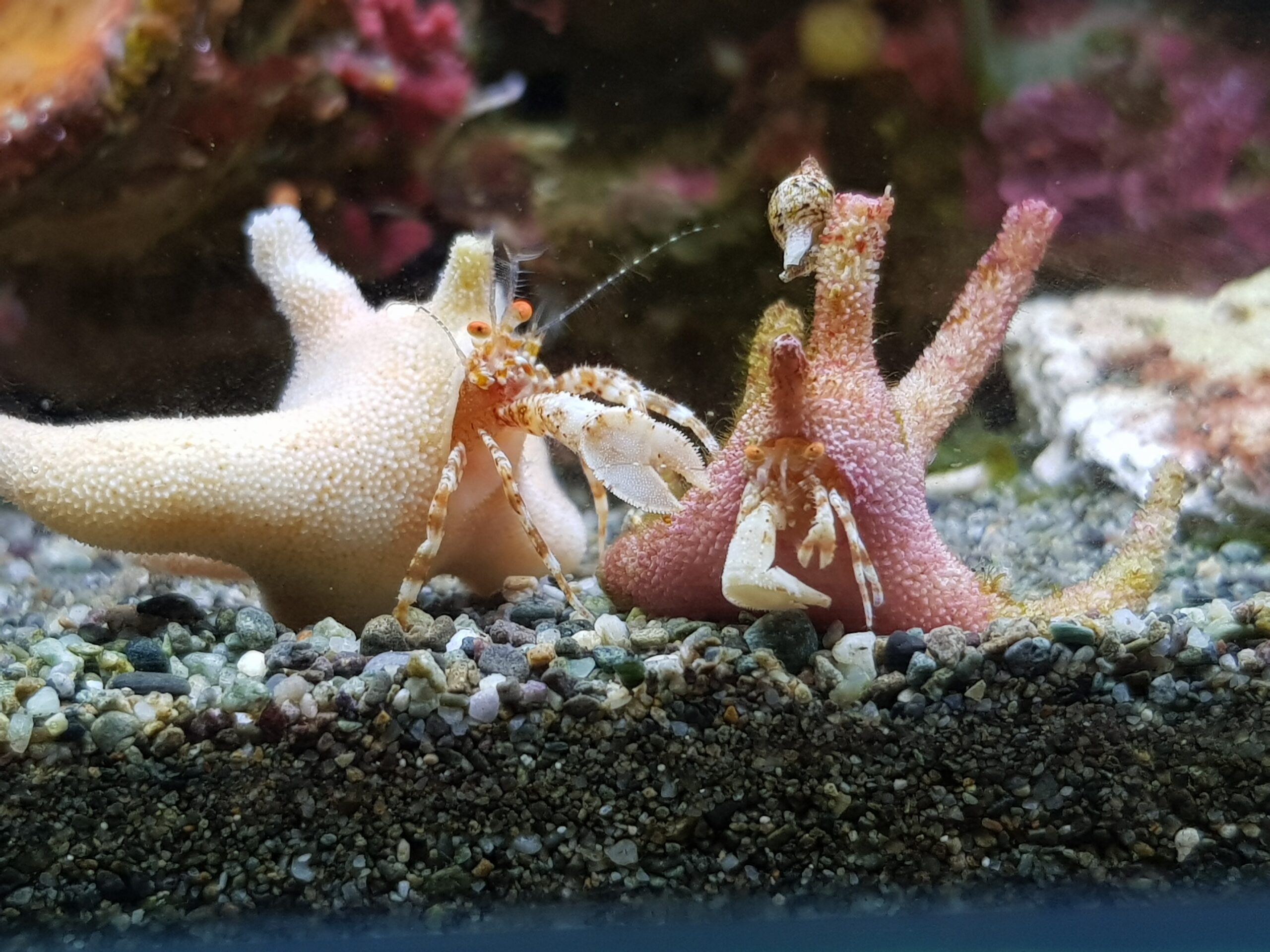
3. Staghorn Hermit Crab
As reef-keepers, we naturally gravitate towards symbiotic relationships. There is just something about two completely unrelated organisms working together to benefit each other. One such relationship is between the Staghorn Hermit Crab, Manucomplanus varians, and the calcifying hydroid, Janaria mirabilis.
In nature, Janaria encrusts over an existing shell inhabited by the hermit crab, slowly eroding it. After a while, the hermit’s home is completely replaced by the antler-like structure forming Janaria mirabilis. The crustacean benefits from this as it has an ever-growing home and protection from predators by the stinging zooids of its symbiotic partner. The hydroid receives fine food particles whenever the hermit feeds and avoids suffocation by fine sediments and mud.
This pair sometimes surfaces in the aquarium trade and when it does, the dynamic duo is usually quite expensive. There are a few things to consider when keeping Staghorn hermit crabs. Although they can be found in small groups in the wild, once transferred to an aquarium they exhibit quite a bit of interspecies aggression, trying to pull each other out of their symbiotic hosts.
Also, they tend to leave their hydroid shell behind if there are other suitable shell options, so make sure there are no snails or shells in their tank. It is still unknown how to keep Janaria mirabilis in an aquarium for an extended period. In nature, this hydroid can be found in shallow waters, forming symbiotic relationships with zooxanthellae, and in depths of more than 700 meters (2300 feet), solely capturing planktonic particles for its nutritional needs.
In previous years, I’ve kept the symbiotic pair in different experimental setups intending to keep Janaria mirabilis alive. The longest survival time of the hydroids was about 6 months in a setup with low lighting (around 50 PAR) and daily feedings with powdered foods. In the future, I would like to try the “Chinese Way of NPS Coral Reefing” to succeed with the long-term care of these species hopefully.
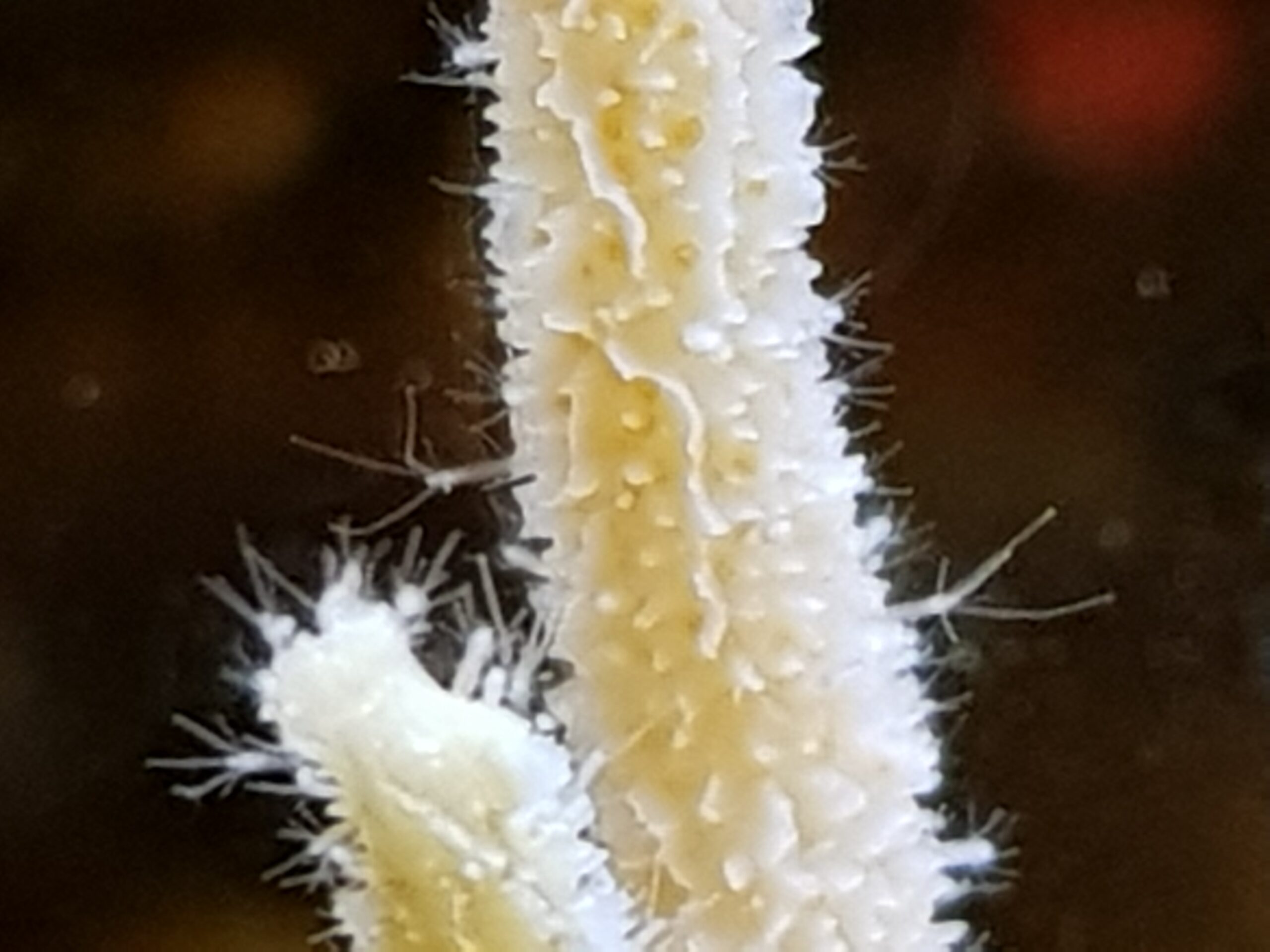
Literature used for writing this article:
“Tunicate feeding filters”; Q. Bone et al.; Cambridge University Press
About the author
Florian Gaudig is a 27-year-old microbiology teacher from Bavaria, Germany. He has been reefing for 12 years and started with keeping freshwater aquariums before switching to the salty side. From the very beginning, he has been fascinated by azooxanthellate/non-photosynthetic corals. About three years ago he converted his tank to 100% NPS. Since then, he has kept many different species of NPS but tends to focus on keeping gorgonians. Last year, he set up a specific tank for Stylasteridae. On his Instagram: @darksidereefing he tries to educate people about NPS reefing.



